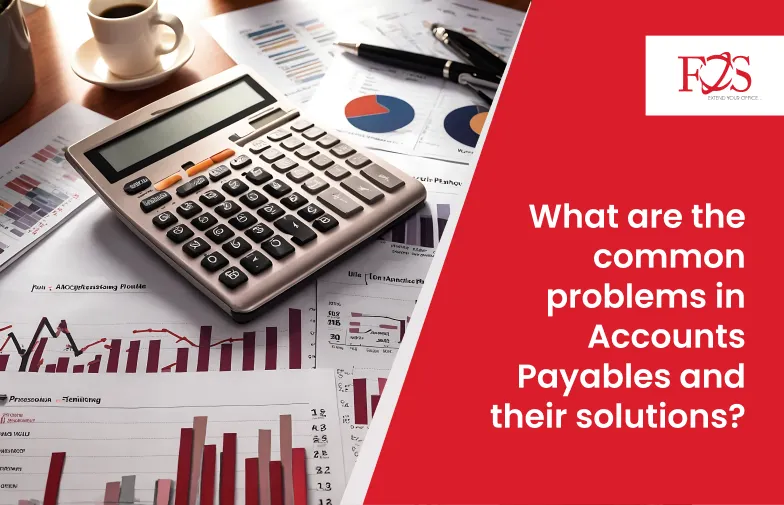Introduction
Accounts Payable (AP) is an important subprocess, that involves timely payments of the invoices and keeping of accurate records. The statistics show that 54% of the companies experienced the problem of delayed payments and it takes several days to get the payment. However, the AP process is often followed by several problems that can negatively affect the business, its operations, and its revenues.
These include delays in data entry, key errors that may lead to incorrect entries, and complicated approval processes that may hinder operations. It is now time to discuss some of the common issues associated with accounts payable and the strategies for addressing them.
Common Accounts Payable Problems
Manual Data Entry Issues
Manual data entry is enormous and can lead to wrong payments and imbalances in report figures. Such mistakes may lead to adverse impacts such as loss of money, friction with suppliers, and distrust of accounting data.
Rectifying errors that may be spotted in the spreadsheets is quite a tiresome process since it will take much time to complete the AP process hence reducing productivity. This consumption can be more constructively used in tackling other activities that are useful to the business.
Slow and Inefficient Processes
Due to the time-consuming method of handling invoices results in some invoices accruing interest charges. This inefficiency is likely to have an impact on the cash cycle, collaborating suppliers, and the ability to meet payment deadlines.
Additional approval levels increase delays in the AP cycle, resulting in inefficiencies and stagnation. Optimizing these processes is critical to ensuring that invoices are processed and approved as fast as possible.
Matching Errors
When the matching is done manually, there are always issues of differences between Purchase orders, invoices, and receipt reports which require the attention of the management to clarify. This manual process of matching can also lead to considerable delays in the payment cycle.
To settle these disparities, considerable time and effort are spent, contributing to the prolongation of the AP procedure and reduced productivity. It means that the time spent on the inequalities of investigation is taken away from other important accounting activities.
Missing or Lost Invoices
Manual paper invoices may be misplaced or lost often leading to delayed payment and frequent follow-ups on the supplier’s end. This risk exposes the business to high risks of delayed payments and the possibility of supplier disagreements.
Late payments cause suppliers to become annoyed and affect business relations, suppliers charge extra fees, and the company receives a bad reputation. Timely and accurate handling of all invoices received is very important.
Payment Errors
Mistakes such as human mistakes or having two similar invoices can lead to paying the same invoice twice, thus causing a loss of money and time in the reconciliation process. Such mistakes must be avoided to keep errors to a minimum within the financial realm.
Prepayment creates problems and interferes with cash flow since one is paying before receiving a product or service. There should be controls to ensure that payments are made only after the delivery of goods or services has been received.
Accounts Payable Fraud
Fraudulent activities, including fake invoices, can lead to losses and should be detected and avoided. Preventing fraud is the key to protecting company funds; thus, it is crucial to employ sound fraud prevention methods.
Poor Visibility and Lack of Control
Manual processes do not allow for tracking and managing the status and aging of accounts payable. Higher visibility and effective AP are required in the supply chain process.
This increases difficulties in maintaining audit trails, which results in poor compliance and financial records. This is important as it makes the audit trails detailed and useful for checking the transparency and accountability of financial transactions.
Solutions to Accounts Payable Problems
Automate the AP Process
OCR and AI can be used to capture data and eliminate errors in data entry processes. It goes without saying that these technologies can be used to scan invoices and input the information accurately.
The automated matching identifies differences between purchase orders, invoices, and receipts to minimize or prevent payment errors. This automation helps in simplifying the matching process and minimizing the chances of human intervention.
Invoice management minimizes the loss of invoices and makes AP more efficient through digitization. With digital invoices, it is easier to keep track and store documents and less likely to encounter lost invoices.
Streamline Workflows
Making approval processes faster and less complex eliminates difficulties in the AP process. Proper and easily understandable processes help to approve invoices at the necessary rates without extra time.
Routing of the invoices for approval through automation also helps in faster processing and timely payments. It cuts down on the time taken to forward the invoices physically and the time spent waiting for approval.
The integration of AP with ERP and other systems allows for a fully automated process from start to finish. Integration allows all financial data to be in harmony, and readily available in real-time.
Improve Supplier Management
Suppliers are contacted often to address problems and always ensure that friendly relations are kept. It is very important to regularly update the suppliers on the status of their payments and also to reply to any of their complaints.
Discounts given to customers to allow early payment can enhance the terms granted and cash received. Using these discounts can lower expenses and improve the supply relationship with the provider.
Supplier self-service portal where suppliers can check payment status and submit invoices thus making it more transparent and efficient. These portals afford suppliers easy means through which they can interact with their respective companies.
Gain Visibility and Control
With the help of AP analytics, it is possible to determine KPIs and specific aspects that require further enhancement. The AP data analyzed assists in decision-making to enhance the AP process.
Compliance is achieved by keeping accurate records of all transactions to support the audit trail. Every transaction should be recorded in the audit trails to promote transparency.
As the AP data and documents are centralized, it is easier to maintain control and manage the process thus enhancing efficiency. A centralized system means that all the information that one needs can be accessed and controlled from a central point.

Conclusion
Accounts payable is a crucial element in the management of organizational finances, and overcoming the above AP challenges is fundamental to financial and supplier relationship sustainability. When AP is automated, workflows are made simpler, supplier relations are managed better, and when visibility and control are gained, business AP is made a lot more efficient. Adopting these solutions will result in cutting costs, increasing efficiency, as well as enhancing the stability of the financial management system.
Have you been struggling with the following accounts payable issues? Contact the FOS Desk for more information and solutions required for your business operation.
